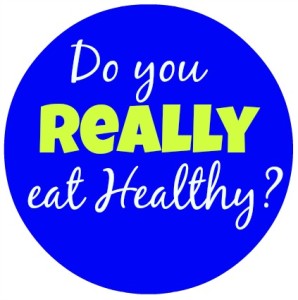There’s more to your diet than just eating “healthy”. That’s a tricky statement though, isn’t it? In reality, there are so many dimensions to eating healthy that most of the time mainstream nutritional advice focuses on eating more fruits and vegetables, less sugar, etc. That’s a good place to start and it’s basic information, but once you’ve decided to eat more vegetables – which ones do you eat and why? Here in lies your responsibility to take your health one step further. It requires research. I’m getting you started in this little blog, but remember that it’s just the tip of the iceberg! 
Environmental Working Group has developed the “Dirty Dozen” and “Clean 15” to help you shop for foods with low or no pesticides. The “Dirty Dozen” are those foods that have the HIGHEST level of pesticide residue. It is recommended that you only buy ORGANIC for those items. The “Clean 15” are those foods that have the lowest pesticide residue and safe to eat conventional. These are a few of the highlights of the latest research:
- Every sample of imported nectarines tested and 99 percent of apple samples tested positive for at least one pesticide residue.
- The average potato had more pesticides by weight than any other food.
- A single grape tested positive for 15 pesticides. Single samples of celery, cherry tomatoes, imported snap peas and strawberries tested positive for 13 different pesticides apiece.
- Some 89 percent of pineapples, 82 percent of kiwi, 80 percent of papayas, 88 percent of mango and 61 percent of cantaloupe had no residues.
- No single fruit sample from the Clean Fifteen list tested positive for more than 4 types of pesticides.
I will clarify that this report is ONLY with reference to pesticides. It has nothing to do with genetically modified produce (that’s a whole different animal, but closely linked). However, exposure to pesticides has been linked to specific health conditions. Click here to read their full report.
I am a big advocate for organic growing practices! For me, this means no added hormones, pesticides, antibiotics, carcinogenic chemicals, etc. I don’t necessarily have to have the USDA Certification stamp, but I primarily only buy food that meets those criteria. (I’m not perfect though so I do cheat sometimes!) There are a whole host of reasons why organic foods are better for you, but I will let you check out this website and search all the topics of interest to you. This just points you in the right direction to learn more about organic and make an informed decision for yourself.
Now, I will quickly give you some info on genetically modified organisms (GMOs). These are modifications to the DNA of certain plans to increase production and withstand pests. The modifications make them more “hearty”. Think of it this way. If you were a hiker, you’d want to be genetically modified so you could grow a camel hump and produce and carry your own water sack. Or, you could be genetically modified to convert your spit into a high-protein meal to sustain you throughout the day. Yes, that would be genetically modified humans! Kinda gross and crazy to think about, but I’m exaggerating (a little). Check out the Non-GMO Project for some great information about GMOs.
If that’s not enough research/information to make you think about what healthy really means, try watching “Food, Inc”! This movie turned my husband into an organic eating freak over night! None of it is meant to scare you – just to make you aware of the food you are eating and helping you make healthy choices. 🙂 By all means, you have to eat! You just choose differently.
